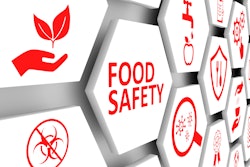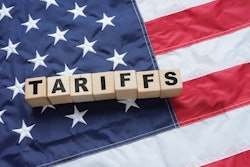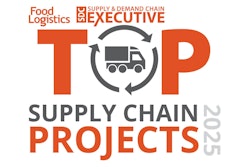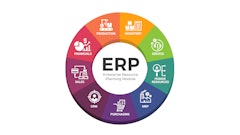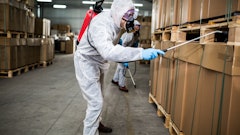
Recent talks between the EU and UK reignited interest in how both economies can streamline the movement of perishable goods. Of particular note was the proposal for a Common Sanitary and Phytosanitary Area (SPS), a step that could simplify border checks and support the seamless flow of food products. For customers in the food and agri-food sectors, this could open the door to smoother logistics and cost efficiencies. What this could also mean for cold chain logistics is a proven pillar of supply chain resilience, not just as a trade facilitator.
Last-mile logistics innovations or the future of supply chains online searches result in responses tied to electric-powered fleets, automated warehousing, and of course, AI. These are no longer buzzwords, but the new infrastructure delivering this vision of smarter growth.
Often, these innovations are born of challenging times. As the climate shifts and logistical challenges like border delays persist, technologies such as, electric fleets and remote temperature monitoring are becoming game-changers for chilled food trade. However, recent discussions around the proposed SPS agreement are a reminder that another crucial factor underpins all efforts to effectively revolutionize supply chains: regulatory alignment.
Policy dictates delivery
Recent talks between the UK and EU are just one example of how influential regulatory change can be, particularly to the logistics networks supporting perishable goods.
Trade policy can have far-reaching effects, sometimes creating new opportunities but also presenting challenges. For instance, North American consumers have a passion for citrus fruit, most of which comes from Africa’s Western Cape. With the possibility of increased tariffs, affordability for American consumers may shift, and producers may need to explore new markets to maintain sustainability. Mexico faces a similar challenge with its avocado farmers vs. ever-changing levies.
Policy misalignment at this scale often creates added complexity, from unexpected costs to delays in delivery, and in some cases, loss of access to markets. For example, 15 shipments of Indian mangoes were rejected by U.S. authorities due to documentation issues. For exporters, rerouting perishable goods at short notice proved unviable, resulting in the destruction of produce.
In the case of the SPS agreement, however, regulations are making trade easier. Costs are being slashed and the copious amounts of paperwork, which British goods such as dairy, fish, eggs and red meat were originally subject to, are being completely removed. This instance is an example of policy aligning well with trade innovations. But in perishable trade throughout the world, it’s clear how significant regulatory influence can be on even the most sophisticated trade networks, for better or worse.
The latest supply chain innovations can facilitate or minimize the impact of these swings to an extent, but they’re not the perfect solution on their own. Enhancements like predictive analytics are beneficial, but they can only do so much in this fragmented landscape. Further, while real-time insights may help an exporter reroute trade at the last minute, logistics operators still need to react effectively. That means nimbly facilitating new market access or perhaps overcoming regulatory bottlenecks elsewhere.
To truly revolutionize cold chain logistics takes a more integrated approach to how supply chain innovations work, both with and in response to regulatory shifts. While trade and regulation change and evolve in silo, logistics operators cannot fully support the reliable movement of perishables or other global industries and they will all struggle to unlock sustained growth.
A strategy for agile cold chains
Dr. Judith Bryans, chief executive of Dairy UK, described the “unencumbered” trade promise of the UK-EU SPS news as incredibly valuable for the agri-food sector. Unencumbered is the key word, here – the aspiration for food trade everywhere. And an integrated approach to trade and the policies that govern it should enable it.
This means that rather than simply implementing digital tracking and automated warehouses, we use these new innovations in ways that align to policy to make seamless trade flows the norm. Certain logistics tools simplify food exports by bringing freight forwarding and customs documentation and regulatory compliance into one online platform. This allows the Peruvian government to update the system in real-time with tariff and health requirements, enabling us to keep our customers compliant without causing delays. As a result, producers also have greater quality assurance concerning their products.
If we take a broader view, however, there's also a need for greater collaboration to realize full integration.
Cold chain operators often have close, long-lasting relationships with producers. This gives an in-depth understanding of the care different produce needs as well as the unique challenges businesses face based on their geography and products, along with budget constraints. Combined with infrastructural expertise and global-to-local know-how, this means logistics operators can add real value to meaningful policy negotiations.
In partnership with trade bodies and governments, operators can add real value when facilitating regulatory changes, ensuring their roll out unencumbers trade for all.
Unlocking resilience
Digitally connected supply chains that can monitor everything from reefer temperatures to carbon emissions are signs of next-generation thinking when it comes to perishable logistics. But to completely revolutionize trade for this sector and others in the name of resilience, innovating in tandem with policy is vital.
Regulatory friction is threatening the flow of perishable trade globally, creating bottlenecks and causing unnecessary waste. Yet where policy alignment occurs, as with the UK-EU SPS agreement, logistics networks can innovate strategically and beneficially for entire industries.
Ultimately, the innovations that make cold chains work best are those developed in collaboration with regulatory change. Real progress happens when policymakers, trade bodies and logistics operators share knowledge and integrate their efforts. Only then can we consistently deliver fresh produce efficiently and sustainably – without disruption.





